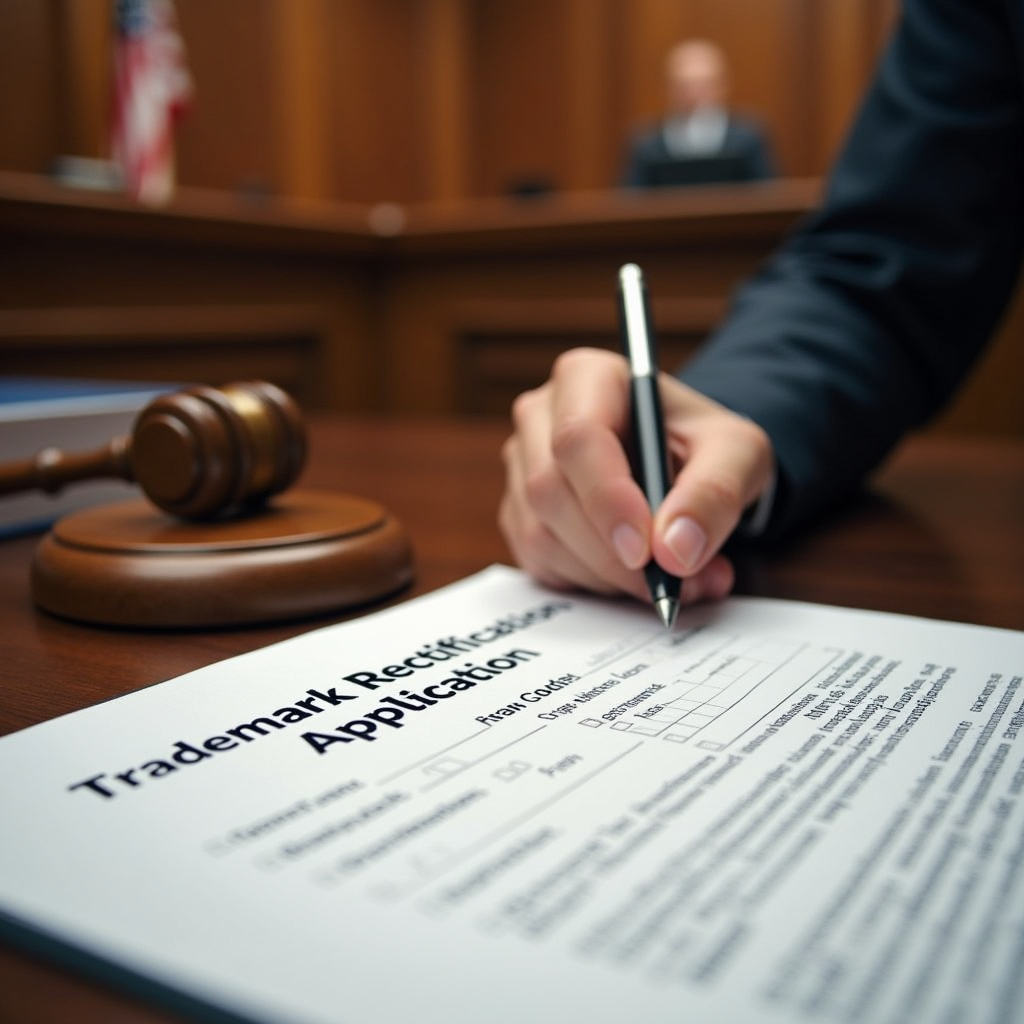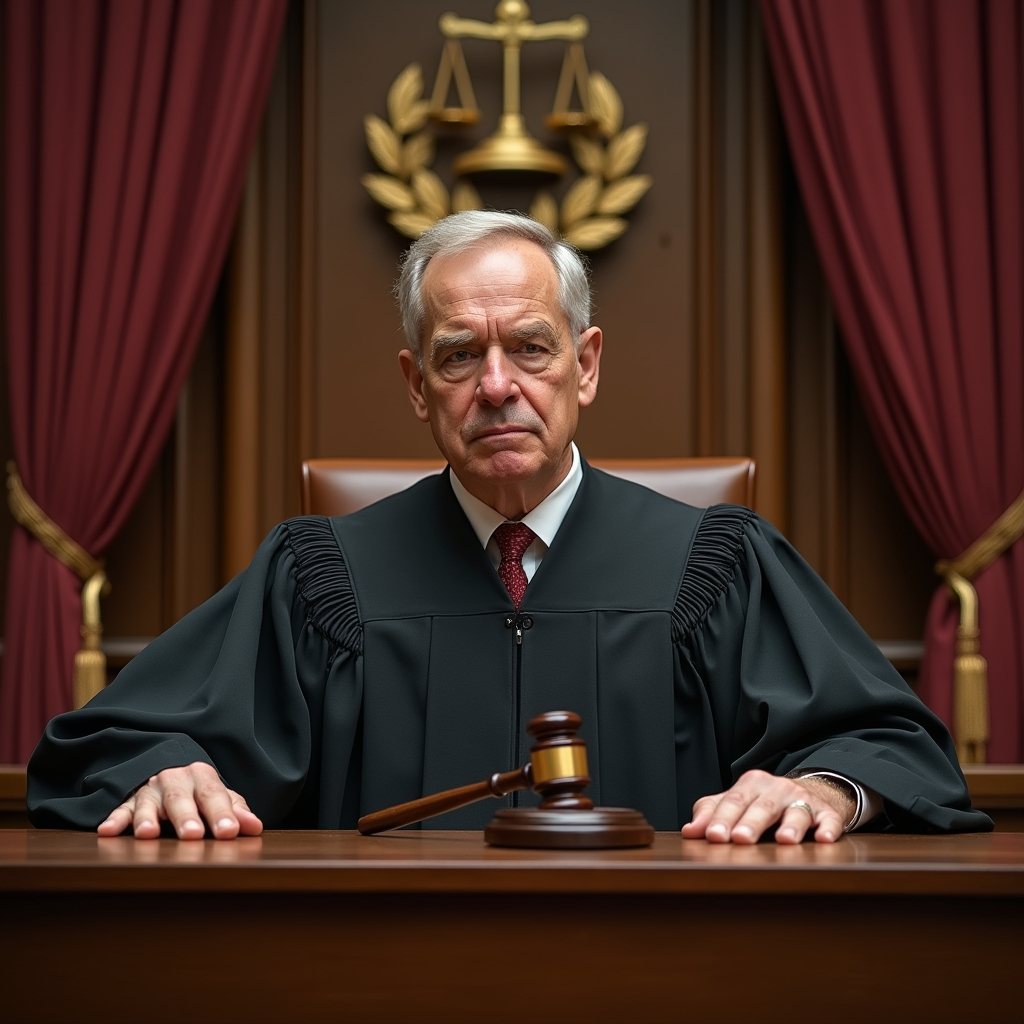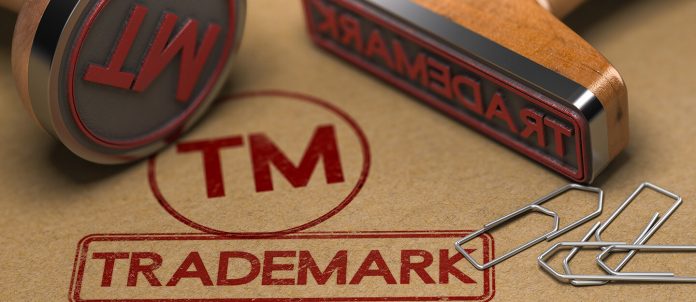This article is written by Shruti Kulshreshtha and is updated by Dilpreet Kaur Kharbanda. This article is an effort to delve into the procedure that has to be followed while filing for the removal of a registered Trade Mark under Section 47 of the Trade Marks Act, 1999 and the different aspects to be considered while doing so. Furthermore, a series of important judgements are also discussed to understand the evolution that the subject has undergone over the years.
Table of Contents
Introduction
The Trade Marks Act, 1999 serves two primary purposes, firstly to safeguard the exclusive rights of registered trademark owners and secondly to prevent the creation of monopolies by these holders. A trademark, regardless of its registered status, holds significance only when it is actively used in connection with specific goods or services. If a trademark falls out of use and the associated goods are no longer available for sale, the trademark effectively loses its relevance and purpose. This cessation of use can lead to a trademark losing its distinctiveness, particularly when the misuse is due to the registered owner’s inaction rather than due to external factors beyond their control.
Upon interpretation of the Act, it can be observed that certain user requirements must be complied with, in order to bring forth a mechanism for non-use of the registered trademark. The trademark user requirement is a period of time in which the registered trademark is imperative to be used, failing which it is subject to cancellation. The courts have made it aptly clear that these requirements are a must and should be strictly adhered to the removal of the trade mark on the basis of non-use by the person or the company is enunciated under Section 47 of the Act. The requirements of Section 47, the specific jargon used in the provision and the interpretations given by the courts have been dealt with in detail in the article.
Section 47 of Trade Marks Act : removal from register and imposition of limitations on ground of non-use
A trademark is valid for a period of 10 years after which it needs to be renewed for using it again. If a trade mark holder fails to use the trade mark or fails to renew it, the trade mark is liable to be cancelled or removed from the trade mark registry. Chapter VI of the Trade Marks Act, 1999 deals with the use of trade mark and registered users and Section 47 permits the removal of the trade mark upon non-use.
Under Section 47, an application may be filed by any person aggrieved with the registration of a trade mark in a company or proprietor’s name and wants to get that trade mark removed from the register. This application can be made before the Registrar of trade marks or the High Court (after the Tribunals Reform Act, 2021). Earlier, the powers were given to the Intellectual Property Appellate Board for the removal of the trade mark from the register.
Let’s breakdown the provision in simpler terms to understand it in depth:
Grounds for removal of a trade mark
Section 47(1) outlines two scenarios under which a registered trademark may be subject to removal. The circumstances in which a registered trademark can be considered for cancellation are as follows:
Absence of bonafide intention
Under Section 47(1)(a), when it is put forth by the applicant that the trade mark was registered in the absence of a bonafide intention, then a trade mark can be removed. This bonafide intention is in the context of the use of the trade mark. This means that if the person who registered the trademark didn’t plan to actually use it for the goods or services listed, and in fact, hasn’t used it up until three months before someone applies for its removal, the trade mark can be taken off/ removed from the register.
For example, when a trade mark is registered in 40 classes but is used only with regard to 2 classes, this is a defensive registration. This rule applies to companies and registered users where no bonafide use is observed in relation to the goods and services for a period of 3 months before the date of application.
Non-use of the trade mark
Section 47(1)(b) provides another ground for removal, wherein, if it is put forth by the applicant that there has been no bonafide use of the trade mark for a continuous period of 5 years from the date of registration of the mark and 3 months prior to filing the application for registration.
This means that when the trade mark has not been used with a bonafide intention for a continuous period of 5 years and 3 months, it is liable to be removed.

Exception to Section 47(1) of the Act
There are certain exceptions to the general rule of non-use laid down by Section 47(1). A registered trademark may not be removed if the circumstances meet the conditions outlined in the proviso to Section 47(1) read with Section 46 of the Act, which include:
- A company is in the process of being incorporated under the Companies Act, 1956, and the current owner of the trademark plans to transfer the trademark to this new company soon.
- The trademark owner plans for the trademark to be used by a registered user after the trademark’s registration.
- The applicant has been allowed to register an identical/ similar trade mark under Section 12 of the Act.
- If the trade mark is used bonafide for similar or associated goods or services, the High Court or the registrar might decide not to remove it.
Further, Section 47(3), provides another exception to removal of the trade mark due to non-use. It provides that if there are special circumstances, like legal restrictions or regulations preventing the use of the trade mark, and most importantly, these circumstances are not created with an intention to stop using the trade mark, then in that case, the non-use would not count against the trade mark owner. The essential point is, if there is a valid reason why the trade mark could not be used, the owner would not lose the trade mark because of non-use.
Imposing limitations on the use of a trade mark
Under Section 47(2), if a trade mark hasn’t been used in specific areas or for particular markets, whether inside or outside India, and another person is allowed to register a similar trade mark under Section 12 of the Act, then the tribunal may impose restrictions on the original trademark on the basis of an application moved to the High Court or the registrar. These restrictions ensure that the original trade mark’s registration does not cover those areas or markets anymore.
Let’s understand with an illustration, if a company ‘ABC’ has not used its trade mark in the Southern region of India or for exports to a specific country, and another company ‘XYZ’ wants to use a similar trade mark in the southern India, then the original trademark of ‘ABC’ company might be restricted so it doesn’t cover those regions where ‘XYZ’ company wants to run business under similar trade mark.
In simple words, this provision ensures that trade marks are actively used and are not just registered without any real intention to be used. If a trade mark has not been used by a company or a proprietor in a long time, it can be removed from the register. However, an exception can be made if there is a genuine issue or a reason because of which the trade mark could not be used.
Interpretation of key terms
Aggrieved person
The Act does not anywhere define the term ‘aggrieved person’, but the courts have interpreted it to mean a person whose substantial interest lies in the removal of the trade mark from the register or those persons who would suffer damage if such trade mark remains in the register.
The Hon’ble Supreme Court in the case of National Bell Co. Ltd. vs. Metal Goods Mfg. Co. Ltd. (1970), observed that the expression ‘aggrieved person’ has been given a broad interpretation by the courts in previous years. The term ‘aggrieved person’ also includes those individuals who have used the trade mark before its registration. Further, it also covers those who are facing or have been warned about infringement actions by the registered trade mark owner. The court held that such a liberal interpretation of the term ensures that both the prior users and those who might be threatened with legal action are equally protected.
Further, the Hon’ble Delhi High Court in the case of A.K. Al Muhaidib and Sons vs. Chaman Lal Sachdeva (2024), while interpreting the term ‘aggrieved person’ referred to the judgement of Hon’ble Supreme Court in the case of Infosys Technologies Ltd. vs. Jupiter Infosys Ltd (2010), where the court while defining the ‘person aggrieved’ under Section 46 and Section 57 of the Trade Mark Act, 1999, observed that the person must be one whose interest is affected in some possible way and not just a fanciful suggestion of grievance. The test of locus standi may be met when there is a likelihood of some injury or damage to the applicant if such trade mark remains on the register.

Furthermore, the court admitted the definition given in Kerly’s Law of TradeMarks and Trade Names (11th Edn.), “the persons who are aggrieved are all persons who are in some way or the other substantially interested in having the mark removed, where it is a question of removal from the register; including all persons who would be substantially damaged if the mark remained, and all trade rivals over whom an advantage was gained by a trader who was getting the benefit of a registered trade mark to which he was not entitled”.
The application cannot be filed anonymously, since the onus of proving the damage from the non-removal of a trademark lies on the affected party. Moreover, the application mandates the name of the party aggrieved to be mentioned in the form (discussed further in the article) for making it a valid application for the purpose of Section 47. This is done to ensure that a random third party who is not even affected by the trademark does not file such an application for ulterior motives. Hence, this ensures the sanctity of the procedure.
In the case of Wright, Crossley and Company’s Trade mark Re, 1898(15) RPC 131, the court observed that a person is said to be aggrieved when in some way he is damaged or injured if the trade mark is allowed to stand and it should be seen in a practical sense, and not merely in a fantastic view.
Further, the Hon’ble Supreme Court in the case Kabushiki Toshiba vs. Tosiba Appliances Co. (2008), held that the person filing the application has to show to the court that he suffered or would suffer some damage or injury due to the trademark that is registered and it should be removed.
Non-use of the trade mark
With regard to Section 47 of the Act, non-use of a registered trade mark occurs when it is not used for more than 5 years and 3 months.
To understand the real connotation of the term non-use, it is important to first of all understand what actually the use of a trade mark means. ‘Use’ of a trade mark means that when there is a bonafide intention for the use of the mark in the ordinary course of trade and not only to reserve the right to use the mark. In the case of M/S J. N. Nicholas (Vimto) Ltd. vs. Rose and Thistle & Anr. (1993), it was held that use of a trade mark does not necessarily mean a physical sale. Even if the mark has been used for the purpose of advertisement in the said period of 5 years and 3 months, without even having the existence of the goods, fulfils the requirement of being used under the Act.
Generally, the responsibility to demonstrate that a trademark has not been used falls on the individual or entity that initiates the application for rectification of register under Section 47 of the Act, however, this burden of proof can be transferred to the trademark owner as well. In such a case, the owner has to bring forth some evidence to show that the trademark has been actively used. If the owner fails to prove this, the trademark may be removed from the register.
The proof of use and non-use of a mark must be clear and convincing to the Court. ‘Bonafide use’ means the use that is honest and genuine and ‘not pretended’. The substantiality of use judged by ordinary commercial standards, depending upon the nature and circumstances of the case may be relevant to determine whether it was in fact bonafide.
In the case of Hermes Societe Anonyme vs. B H Ries Limited, 1982 RPC 425, the Court observed that the assistant registrar was right in stating that the words ‘in the course of trade’ must be given a wider interpretation to include the steps that are essential for the production and the actual positioning in the market.
In the case of Express Bottlers Services Pvt. Ltd. vs. Pepsico Inc. & Ors. (1988), the bench rejected the contention of the petitioner and held that the Trade Marks Act nowhere mentions that the word ‘use’ means actual sales of goods in the market to the public. The respondent had made sales of goods to the limited and restricted market available to him during the statutory period, even though it was sold to privileged persons only. This was held as a valid use of the trade mark.
Cases like these imply that the Courts have given a broad interpretation to the word ‘use’ with respect to trade marks.

The Hon’ble Delhi High Court in the case of Rong Thai International Group Co. Ltd. vs. Ena Footwear (P) Ltd., (2023), put forth that Section 47(1)(b) of the Act provides that a trade mark can be removed from the register if it had not been used bonafide for a continuous period of five years or more. The period of non-use for a trade mark for it to be cancelled has to be calculated from the date which it was entered in the register. Furthermore, the end point for the calculation has been defined by the court to be 3 months before the date of the application for removal.
The court further stated that under Section 47(1)(b) of the Act, a trade mark is afforded a ‘grace period’ during the initial five years following its registration, which protects it from being cancelled on the ground of non-use. After this grace period, the trade mark becomes susceptible to removal due to non-use. The court also clarified that for a removal challenge to be successful, it must demonstrate continuous non-use of the trade mark for at least 5 years from the date of its registration up to 3 months before the application for cancellation. Any genuine use of the trade mark during this period would break the continuity of non-use and would render the cancellation application invalid.
The Hon’ble Supreme Court in the case of Cycle Corporation of India Ltd. vs. T.I. Raleigh Industries Pvt. Ltd.,(1996) held that the initial burden is on the applicant who is seeking rectification of the register, to show that the registered owner has no intention to use the trade mark during the relevant period and in fact, has failed to do so. After this, the onus shifts to the registered proprietor who has to prove the use of the trade mark during the relevant period.
Further, in the case of Shell Transource Limited vs. Shell International Petroleum Company Ltd. (2012), the Intellectual Property Appellate Board observed that the burden of demonstrating ‘non-use rests with the party asserting it. However, if the applicant claims non-use, the opposing party must explicitly contest this claim. If they fail to do so, the court may assume that the allegations are true. Essentially, while the responsibility to prove non-use lies with the claimant, the respondent must actively refute these allegations, or risk them being accepted by the court as uncontested.
High Court
We are all aware what a High Court is. However, the question with respect to the Trade Marks Act, 1999 is, which High Court would have the jurisdiction to deal with the removal or rectification of a trade mark.
The Trade Marks Act, 1999 has nowhere given a precise definition of the High Court. However, the General Clauses Act, 1897 under Section 3(25), defines the High Court as the highest civil court of appeal, excluding the Supreme Court. The definition extends to the parts of India to which the General Clauses Act, 1897 apply.
The issue with regard to the jurisdiction of the High Court came before the Hon’ble Delhi High Court in the case of Dr. Reddy Laboratories Ltd. vs. Fast Cure Pharmacy and Anr. (2023). In this case, the Court dealt at length with which High Court would have the jurisdiction to decide the matter with regard to Section 47 and Section 57 of the Trade Marks Act, 1999. The Court referred to the judgement of Giridhari Lal Gupta vs. K.Gian Chand & Co. (1978), where the court while deciding on the issue of jurisdiction under the Designs Act, 1911 for cancellation of a registered design, held that the jurisdiction is not limited only to that High Court under whose jurisdiction the Controller of designs office fall. The High Courts within whose jurisdiction the dynamic effect of the registration can be felt, they equally have the jurisdiction to try the matter.
Further, the court held since there is no specific definition provided under the Trade Marks Act, 1999 and even at the time of passing of the Tribunal Reforms Act, 2021 and revival of the power of the High Court under Section 47 and 57 of the Act, it clearly implies the intent of the legislature that it did not want to exclude any High Court from exercising its jurisdiction under the Trade Marks Act, 1999.
Therefore, the geographical location of the High Court and the Registrar need not be the same and the High Court to have jurisdiction need not have territorial dominion over the Registrar with respect to Section 47 and 57 of the Trade Marks Act, 1999.
The procedure as per Trade Marks Rules, 2017

The Trade Marks Act, 1999 does not give the procedure to be followed while filing an application for the removal of a trade mark under Section 47. For this, the Trade Marks Rules, 2017 are to be taken into consideration.
Rule 97 of the Trade Marks Rules, 2017
Rule 97 of the said Rules deals with the application to be filed for the rectification or removal of a registered trade mark. This rule sets out the following procedure:
- An application in Form TM-O is to be filed with the Registrar for the varying of any entry relating to a trade mark or collective trade mark.
- The application is to be accompanied by a statement that provides the nature of the applicant’s interest, the complete facts and the relief sought by him.
- If the applicant is not a registered proprietor of the impugned trade mark, then the application along with the statement is required to be left at trade marks Registry.
- If the applicant(s) is/are a registered user(s) then the application and statements are required to be accompanied by as many copies as the number of registered users.
- The copy of the application and statement is delivered to the registered users and the registered proprietor by the Registrar within one month. This is done after the due verification of the application under Rule 43 (i)(c) of the Rules.
Rule 98 of the Trade Marks Rules, 2017
Rule 98 gives the further procedure to be followed after the filing of the application in the prescribed format. The Registered proprietor shall file a counterstatement within 2 months of the receipt of the application from the Registrar. This counterstatement shall consist of the grounds on which the application is contested. If no such counter-statement is made within 3 months of the date of receipt of an application under Rule 97, then the applicant can file evidence supporting the application for the rectification of the Register.
Rule 99 of the Trade Marks Rules, 2017
Pursuant to Rule 99, any third party can intervene in the proceedings alleging an interest in the registered trade mark and can apply in Form TM-O for the leave to intervene. The Registrar may grant the leave or refuse it after hearing the parties concerned. The order passed by the Registrar is appealable within 90 days to the IPAB, but the order of IPAB is not further appealable. For challenging the order of IPAB, a writ petition shall be filed in the High Court.
The Second Schedule of the Rules contains Form TM-O which deals with the application for rectification of the Register and the application for filing of the counter statement. In the Trade Marks Rules of 2002, these applications had separate forms, but after the amendment, both of the forms required for the purpose of Section 47 are dealt in the same form to avoid confusion. The First Schedule of the Rules gives the prescribed fees to be paid upon the filing of the applications. Entry No.2 of this schedule provides the fees of Form TM-O which is ₹3,000 for physical filing and ₹2,700 for e-filing of the application. This fee is for a single application of counter-statement, as the case may be.
Landmark judgments
Vishnudas Trading as Vishnadas Kishendas vs. Vazir Sultan Tobacco Co. Limited (1996)
Facts of the case
In this case, the applicant filed for limiting the use of the trade mark ‘Charminar’ which was used for the manufacturing of cigarettes. This trademark was also registered in other classes of zarda and quiwam, which were intended to be used by the proprietor but were never actually used.
Issues Involved
Whether the trademark issued to the defendant ‘Charminar’ be removed under Section 47 of the Trade Marks Act, 1999 on the ground of non-use with respect to some of the goods which were not being manufactured under the said trade mark?
Judgement of the case
The Supreme Court was applying the provision of non-use under Section 47 of the Act. It held that if a person is trading or manufacturing only one or a few goods and has no bonafide intention to actually trade in the rest, but has a trademark registered for several goods, this registration may be subject to rectification or removal. The registration should only cover the classes of goods that are actually used by the proprietor.

Hardie Trading Ltd. and Anr. vs. Addison’s Paint and Chemicals Ltd. (2003)
Facts of the case
In this case, the trade mark in question ‘Spartan’ was invented by James Hardie and Co. and the company dealt with paints and lacquers under the said name. In December 1976, Addison Paints and Chemicals Ltd. put up an application to register a trade mark for ‘Spartan’, but the same was rejected. Then, Addisons Paints and Chemicals Ltd. moved an application under Section 47 of the Trade Marks Act, 1999 to remove the trade mark from the register on the ground that it was not used by the company for the last 5 years.
Issues Involved
Whether the trademark issued to the plaintiff be removed from the register under Section 47 of the Trade Marks Act, 1999 for non-use and are there any exceptions to this provision?
Judgement of the case
The Supreme Court gave a detailed judgement on Section 47 of the Trade Marks Act, 1999. The court put forth a triple test, the three essentials of filing an application of removal under Section 47 of the Act,
- That the application is filed by the ‘person aggrieved’,
- That the trade mark has not been used by the proprietor for a continuous period of at least five years and three months prior to the date of the application and
- There were no special circumstances which affected the use of the trade mark during this period by the proprietor.
The Hon’ble Court further explained that the responsibility to prove the first and second condition clearly rests with the applicant. Conversely, the onus of demonstrating the existence of special circumstances falls on the trade mark proprietor. These conditions must be established sequentially rather than collectively. The third condition can only be addressed once the second condition has been proven. Similarly, the second condition will not be considered unless the High Court or the Registrar is convinced of the applicant’s legal standing (locus standi).
The court took into consideration the argument put forth by the Hardie Trading Co. that due to import restrictions, it was economically unfeasible for them to import the products into India. The court considered this as a special circumstance and refused to remove their trade mark from the register.
Pfizer Products Inc. vs. Rajesh Chopra (2007)
Facts of the case
In this case, the challenge was on the proprietary rights of a drug named Geodon that was registered by the plaintiff on 18th July 1996 in India. The defendant’s argument was that they had been using the trademark ‘Geodon’ since 1st June 2003. Furthermore, they contended that the plaintiff has failed to show the use of the trademark for the past years, making it liable to be removed from the register as per the provisions of Section 47 of the Trade Marks Act, 1999.
Issues Involved
Whether the trademark issued to the plaintiff be removed from the register under Section 47 of the Trade Marks Act, 1999?
Judgement of the case
The plaintiff in this case had a global market and succeeded in proving the use of the trade mark globally in 40 countries, if not in India. Hence, the Delhi High Court refused to remove the trade mark from the registry. Therefore, the defendant’s application was dismissed.
M/s Kellogg Co. vs. M/s Pop Foods Products Pvt. Ltd. (2018)
Facts of the case
In this case, the appellants manufactured chewing gums, bubble gums and dairy products under the trademark name POPS. M/s Kellogg Co. served the appellants with a notice claiming that they are the proprietors of the trade mark POPS in relation to cereal derived breakfast food. Furthermore, the respondent applied for registration of their mark back in the year 1989 but did not ever use it and over and above that, there was no evidence of sale of their products in India between 1989 and 2011.
The appellants’ argument was that there is very little probability that it would create any confusion in the minds of the people with regard to the products of Kellogg Co., as they offer breakfast products, which are completely different from theirs. The matter was heard byIntellectual Property Appellate Board and the decision was passed in the favour of the M/s Pop Foods Products Pvt. Ltd. and ordered the removal of the trade mark issued to Kellogg Co. on the ground of non-use under Section 47 of the Trade Marks Act, 1999. The respondents filed a writ petition before the Hon’ble Delhi High Court against the order of the board.

Issues Involved
- Whether the trademark issued to Kellogg Co. be removed on the ground of non-use under Section 47 of the Trade Marks Act, 1999?
- Whether M/s Pop Foods Products Pvt. Ltd. falls under the definition of ‘person aggrieved’ under the Act?
Judgement of the case
The Hon’ble Delhi Court ordered the removal of the trade mark of Kellogg Company under Section 47 of the Act for non-use of the trademark for a period of 22 years. Further, the court held that when the respondent admits that the mark has not been used, then the question of proof of non-user is unnecessary. Furthermore, the respondent was a registered proprietor of the trademark “POPS”, which the respondent used with respect to chewing gums and bubble gums. The respondent had applied for the registration of the impugned trademark in respect of confectioneries similar to that of the petitioner and that is what made the parties come to court. Thus, court held that respondent is an aggrieved person upheld the order passed by the Intellectual Property Appellate Board to remove the trade mark issued to Kellogg Co. on the ground of non-use under Section 47 of the Trade Marks Act, 1999.
Conclusion
The main objective of this provision is to safeguard the bonafide users of trade mark from those who are using it with a malafide intention. Section 47 of the Trade Marks Act, 1999 lays down that mere registration and no use of a trade mark can land a registered proprietor in trouble. This situation can obviously be avoided by timely renewal of the trade mark and ensuring bonafide use of the registered trademark. This mechanism serves as an effective defence system against the malicious use of an important asset of a business.
The interpretation of the law and the provisions is a continuous process and meaning of the terms like aggrieved person, use and non-use of trade mark has seen a lot of changes over the last decade and has only changed for the greater good and the interest of the public at large.

Frequently Asked Questions (FAQs)
What is a trademark?
In simple words, a trade mark consists of features or combinations of features that can differentiate the products and/or services of one business from those of other businesses. Trademarks are considered a form of intellectual property and are safeguarded by both national and international legislation. Section 2(1)(zb) of the Act, defines a trade mark as a mark:
- which is capable of being represented graphically,
- which is capable of distinguishing the goods or services of one person from those of others and
- which may include the shape of goods, their packaging and combinations of colours.
Some of the best examples of trademarks are the logo of an eaten apple that belongs to Apple Inc., the swoosh sign of Nike, the distinct purple colour used by Cadbury for its chocolate packaging, and the slogan ‘I’m lovin it’ of McDonald’s.
Is the Registration of a trade mark mandatory in India?
No, it is not mandatory to get the trade marks registered in India. But, it is advisable to do so as, without registration, no suit can be instituted in the case of infringement of the trade mark. The main reasoning behind the same is that the registration acts as evidence of the proprietorship of the trade mark.
What are the grounds for the removal or cancellation of a trade mark under the Trade Marks Act, 1999?
One of the grounds for the removal of the trade mark is the non-use of that trade mark provided under Section 47 of the Act which is dealt with in detail above in the article. A trade mark may be subject to cancellation if it is used in a way that deceives or confuses the public. Additionally, if the owner misrepresents or fails to disclose significant facts during the application process, and if those facts were correctly presented, would have led to a different decision regarding the registration.
Further, changes in circumstances after the registration that undermine the validity of the trade mark can also be grounds for cancellation. Lastly, if there is a condition that Register of trade marks specifically provides to be fulfilled, then that needs to be met and in the case of it’s violation, the cancellation of the registration of the trade mark can be applied for.
Does the Limitation Act, 1963 apply to Section 47 of the Trade Marks Act, 1999?
No, the Limitation Act, 1963 does not apply to Section 47 of the Act. Reference may be made to the judgement of Fedders Lloyd Corporation Ltd. vs. Fedders Corporation (2005), where the court opined the same with reference to Section 46 of the Trade & Merchandise Marks Act,1958 (added as Section 47 in the Trade Marks Act, 1999). The Court while referring to the judgement of Patel Field Marshal Agencies vs. P.M. Diesels Ltd., (1998) held that the Limitation Act, 1963 does not contain any specific provision that outlines the limitation period for submitting an application under Section 46 of the Trade & Merchandise Marks Act, 1958.
Section 46 of the Trade & Merchandise Marks Act, 1958 already specifies a particular period of non-use required to maintain such an application, introducing an additional limitation period would contradict the legislature’s intent. It was observed that Article 137 of the Limitation Act, 1963 does not apply to applications filed under Section 46 of the Trade & Merchandise Marks Act, 1958.
Therefore, it can be concluded that the Limitation Act, 1963 does not apply to Section 47 of the Trade Marks Act, 1999.
What is the relation between Section 47, 57 and Section 124 of the Trade Marks Act, 1999?
Section 124 of the Trade Marks Act, 1999 provides the procedure when a trademark’s registration is challenged during an infringement lawsuit. It specifically deals with scenarios where the legitimacy of a registered trademark is questioned by either party in the suit. If there are ongoing rectification proceedings before the Registrar or the High Court when an infringement case is filed, the court must suspend the infringement proceedings until the rectification matter is resolved. On the other hand, if no such proceedings are pending, and a party raises a validity challenge during the lawsuit, the court first assesses whether the challenge is reasonably plausible. If it is, the court can then set this issue for consideration and suspend the proceedings for three months. This suspension allows the concerned party to seek rectification of the trademark with the appropriate authority, such as the Registrar or High Court.
Section 57 empowers the Registrar or the High Court to annul or modify the registration of a trademark and amend the Register accordingly. Section 47 deals with the removal of a trade mark from the Register on the grounds of non-use.
In the judgement of Anubhav Jain vs. Satish Kumar Jain & Anr. (2023), the Hon’ble Delhi High Court, while addressing the interplay between these three sections held that the rights under Section 57 to cancel a mark or rectify the Register are available independently of Section 124. However, if an infringement suit raises a validity challenge as part of its defence, then in such a case, the plaintiff gains an additional right under Section 124 (ii) to seek rectification from the High Court.
Thus, Section 124 was viewed as an additional legal recourse rather than an exclusive remedy, and it does not supersede the provisions of Section 57 and Section 47. The Court stressed upon the importance of harmonising the interpretation of these sections and observed that these sections do not conflict with one another, rather they provide distinct remedies in different situations. The court accepted that these Sections overlap in their application, but pointed out that each Section addresses different aspects of trademark disputes.
Therefore, Section 124 was held to be relevant only when a validity challenge arises within a suit and does not otherwise restrict the application of Sections 47 and 57.
References
- https://www.mondaq.com/india/trademark/310546/analytical-approach-rights-of-a-person-to-file-opposition-and-rectification
- https://www.scconline.com/blog/post/2024/01/18/marks-removal-for-non-use-requires-clear-unequivocal-evidence-of-abandonment-dhc-legal-news/
- https://www.livelaw.in/law-firms/law-firm-articles-/anubhav-jain-case-trademarks-act-1999-ipr-field-marshal-case-infringement-delhi-high-court-230879?fromIpLogin=74839.54724700803
Students of Lawsikho courses regularly produce writing assignments and work on practical exercises as a part of their coursework and develop themselves in real-life practical skills.
LawSikho has created a telegram group for exchanging legal knowledge, referrals, and various opportunities. You can click on this link and join:
Follow us on Instagram and subscribe to our YouTube channel for more amazing legal content.
 Serato DJ Crack 2025Serato DJ PRO Crack
Serato DJ Crack 2025Serato DJ PRO Crack










 Allow notifications
Allow notifications



